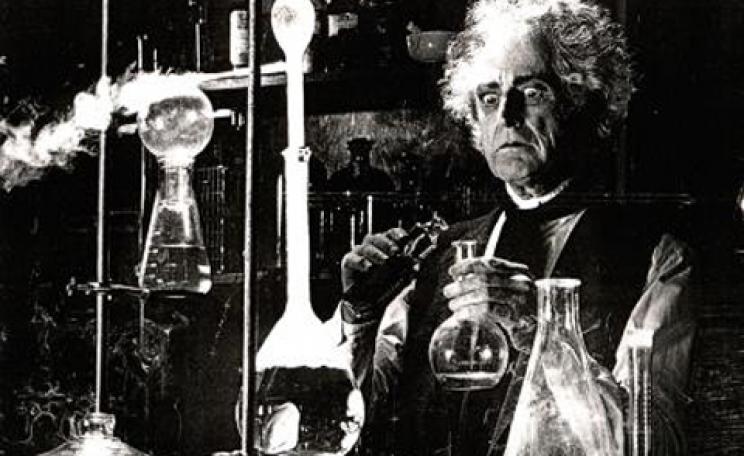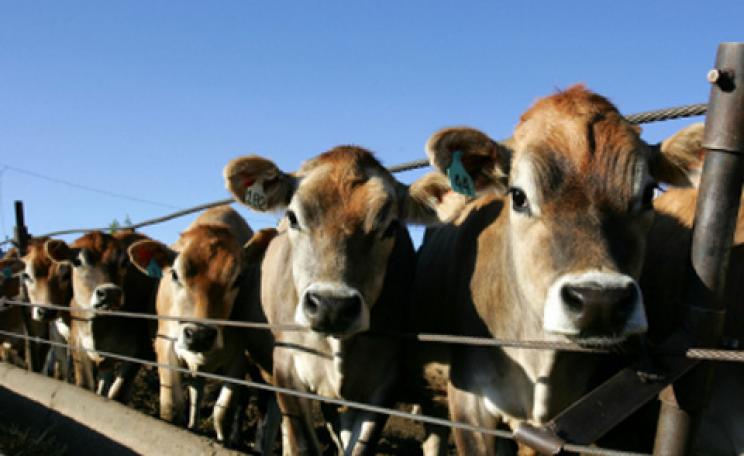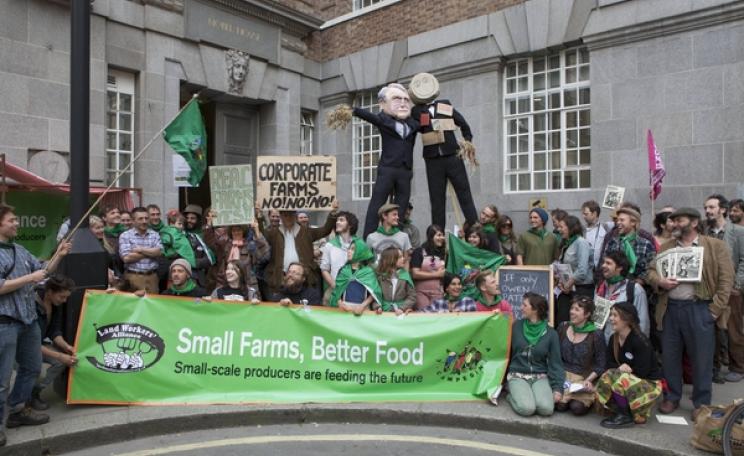Click video player to the left to see how one farmer is managing his cattle and land to help lock carbon into the soil (you can enlarge video player)
The next time you look over a hedgerow and see a herd of cows contentedly grazing a field, you may be forgiven for thinking you are witnessing one of the world’s number one climate criminals in action.
With a reputation for producing an estimated 33 million tonnes of greenhouse-gases (GHG’S) each year - a staggering 13 per cent of the world’s total emissions - it is not surprising that our bovine friends have belched and farted their way to the top of such an unenviable hit-list.
What you may not be aware of however is that this pastoral scene could just be at the forefront of one of the most radical and ingenious solutions to climate change.
Grazing ahead
Among the weird and wonderful initiatives put forward for saving the planet at the Guardian Manchester International Festival - which included carbon-mortgages, energy-bonds and the creative prospect of cloud-making ships - a single proposal on soil-carbon sequestration, given by Tony Lovell from the Soil Carbon Institute of Australia, received an overwhelming response due to the sheer simplicity of its design and the practicality of its approach.
Lovell argues that the planet’s 5bn hectares of agricultural grazing land represent a vast untapped sink for carbon which is currently under serious threat from intensive farming. He claims that simple yet effective changes in the way we manage livestock can restore the natural ability of these grasslands to physically pump carbon dioxide out of the atmosphere.
Too good to be true? The proposal may not be ground-breaking - the idea has been mooted by several prominent agricultural scientists over the past decade - but the scale of mitigation proposed has the potential to intrigue even the most determined sceptics. Lovell calculates that increasing the organic matter content in the top 30cm of the world’s agricultural soils by as little as 2.7 per-cent, has the potential to restore atmospheric carbon dioxide to pre-industrial levels.
According to Lovell the secret to locking carbon in the soil depends on us reverting to a model of management that compliments the ecology of our grasslands and the livestock which graze them.
‘To demonstrate this we must look at one of the last remaining natural grassland ecosystems on the planet, the Serengeti in Africa, to see this natural relationship in action,’ he explains. ‘If you think of a wildlife documentary with a closing-shot panning out across a herd of wildebeest, you’ll notice three main things. Firstly the animals are in one big herd. Secondly the herd is constantly moving, eating the good grass at the front and leaving dung and trampled grass at the rear. Thirdly the herd is kept tightly bunched by pack-herding predators.
‘The problem of unhealthy grasslands arose when we first domesticated these large herbivores and restricted the way they grazed. Through a combination of eliminating their natural predators, separating them into smaller herds for ownership and management purposes and fencing them in to stop them from moving, we fundamentally altered the pattern of their grazing and the natural function of grasslands as a carbon sink.’
It is widely accepted that grasses evolved as species with a natural tendency to balance their above-ground and below-ground biomass – in other words, if grass leaves are eaten, a corresponding amount of root material is lost from the plant. It is this balancing act, which takes place in nature following the intense short-term grazing of large herds, that has caused such excitement.
The dirt on grass
Like all vascular plants, grasses have evolved a symbiotic relationship with unique soil-living fungi. In this case Arbuscular Mycorrhizae supply the plant with water and micro-nutrients and in return use sugars (converted via photosynthesis from carbon dioxide) to form a carbon-heavy substance called glomalin. Mycorrhizae uses glomalin as a kind of super-glue to plug holes and attach itself to the plant roots.
As the grass plant is grazed in a natural ecosystem it responds by shedding below-ground biomass and the carbon-heavy stores of glomalin from its roots into the soil. As the plant re-grows more glomalin is formed using carbon dioxide, drawn not from the soil but from the atmosphere, thereby beginning a pumping action which buries carbon in the soil at a rate equal to the pattern of grazing.
Mankind’s domestication of livestock broke this natural pattern of herd-management, replacing it gradually with continuous grazing systems, many of which are reliant upon specially sown grass mixtures and synthetic fertilisers. As a result, grass plants are grazed intensively and not given the time to re-grow and re-balance their root systems.
The benefits of introducing a model of grazing management that mimics those of natural grassland ecosystems is the focus of a recent book by UK agricultural commentator Graham Harvey. In The Carbon Fields, Harvey explains how ‘rotational grazing’, using fenced-off paddocks within a larger pasture, has the ability not only to stimulate carbon sequestration but also to dramatically increase grazing productivity.
‘Understandably cattle prefer to graze the freshest upper-most shoots of the grass sward and will graze these leaves off an entire field before starting on the lower tougher shoots,’ Harvey writes. ‘By carefully managing the period of grazing it is possible for the farmer to move the cows off the field at the critical point, which allows the grass to produce a continuous cycle of fresh growth. In this way the highest quality grazing is reflected in the quality of the cow’s milk and meat.’
Rotational grazing for improved productivity was an idea first proposed by mid 20th-century French farmer and agronomist Andre Voisin, whose classic book on the subject, Grass Productivity, inspired a revolution in livestock management across Europe. Today there are an estimated 200 farmers in the UK alone practising various interpretations of rotational management for improved productivity.
Added benefits
The technique isn’t just a carbon quick-fix however. Grass-fed cattle have been shown to emit up to 25 per-cent fewer GHGs than their counterparts fed on grains, while grassland systems have demonstrated a much lower carbon-hoofprint compared to conventional meat or dairy operations.
At the micro-level increased levels of Glomalin are associated with enhanced soil structure, improved aeration and nutrient availability – meaning that applications of fertiliser (organic or non-organic) can be reduced. Likewise a rotational approach to grazing management can help prevent many of the problems associated with permanent grazing, including soil compaction, over-grazing, loss of topsoil and pollution of watercourses.
From a scientific point of view there is little doubt that agricultural soils offer enormous carbon-capture potential in the fight against climate change. The Intergovernmental Panel on Climate Change (IPCC) identifies the world’s soils as the third largest carbon sink on the planet, after coal fields and the deep sea, holding an estimated 1580Gt of carbon compared to just 610Gt held in the living plants and animals. What is less clear however is how soil-carbon sequestration – and the farmers who will provide it – will fit into international negotiations on climate change.
Back to the books
One of the biggest problems is the lack of peer-reviewed research on how accurately we can measure the carbon content of soils. And despite widespread enthusiasm for soil-carbon sequestration, there appears to be little consensus on the specifics.
Professor Keith Paustian of the IPCC estimates that changes in rangeland management have the potential to sequester and average of 2 tonnes of carbon dioxide per hectare per year. Australian think-tank Carbon for Life, headed by the soil-scientist Dr Christine Jones however puts the figure closer to 5 tonnes, while a third estimate by the man who many regard as the world’s leading authority on the subject, US agrononomist Rattan Lal, puts the range between 1.2 to 4.1 tonnes per hectare per year.
Tony Lovell thinks that research into soil-carbon sequestration has suffered due to the popular notion that the world’s forests offer more immediate potential as a carbon-sink. ‘We have a massive amount of data on carbon sinks in forestry because we have been measuring forest productivity for conservation and commercial management for a number of years. All that’s missing is a commercial imperative to get a dataset for soils,’ he says.
Who pays?
In the run-up to Copenhagen many commentators are keen to highlight existing soil-carbon trading initiatives as an example of how they may be included in an eventual policy. One example offered by Harvey in The Carbon Fields is the self-styled ‘Carbon Farmers of America’ – a group which currently offer farmers $19 for every tonne of carbon they manage to lock into their soil.
Others fear that problems will arise by attempting to value a commodity whose existence is based on emerging science. In his forthcoming book, Livestock, Meat and Environmental Justice, Simon Fairlie writes:
‘Soil carbon credits are handicapped by the fact that farmers are paid for the amount of carbon they sequester in their soil, but logically they should be paid for the amount they extract from the atmosphere. And this is by no means the same thing.’
Fairlie says that carbon accreditation schemes must work using a ‘whole systems approach’, whereby a farm’s entire carbon budget is factored in to the value of any carbon captured through holistic grazing practices.
While proponents of holistic grazing are keen to see the model adopted as soon as possible, Fairlie urges caution in the face of fledgling carbon-trading initiatives in the US:
‘Claims that carbon sequestration in soil and trees can single-handedly reverse climate change are a bid to make the biosphere responsible for remedying global warming problems that are primarily caused by fossil fuels - as can be clearly seen in the Carbon Farmers of America’s promise that, for $175, they will turn your car into a carbon sink.’
The practice is not without its contradictions. The farming of livestock itself has been justifiably criticised by prominent commentators such as Vandana Shiva and Jonathon Porritt as an ‘inefficient luxury’ which simply cannot be afforded in a world where 9 billion people must be fed by 2050.
On the other hand it is essential that, as highlighted by a recent UN report, ‘the voices of the rural poor and indigenous peoples are not lost in a rush too secure carbon gains’.
For the majority of sub-Saharan African countries, grassland ecosystems may represent the single greatest asset they have to offer in a future carbon-trading arena, which, combined with carbon-sensitive management, could offer great hopes of benefiting from the new-dawn of the carbon economy.
For fans of soil-carbon sequestration, the road to, and from, Copenhagen will be a rocky one. Although the jury may still be out on the form any future soil-carbon trading initiative may take, it is clear that the idea of employing natural ecosystems in the fight against climate change has undeniably caught the public imagination. That it has managed such a feat is testament to the maverick scientists willing to stick their head above the parapet - or indeed the hedgerow.
Ed Hamer is a freelance journalist specialising in agriculture and globalisation issues
See also







